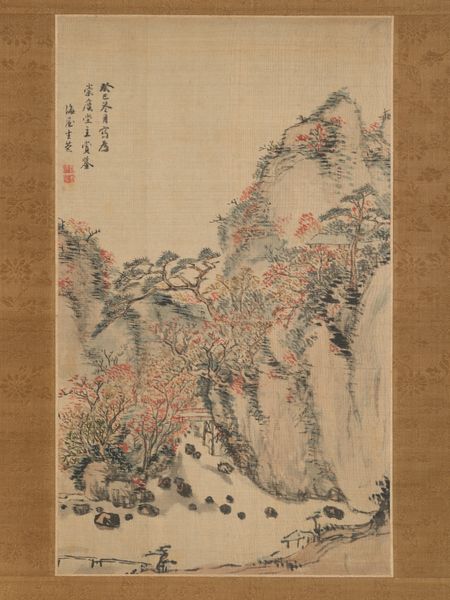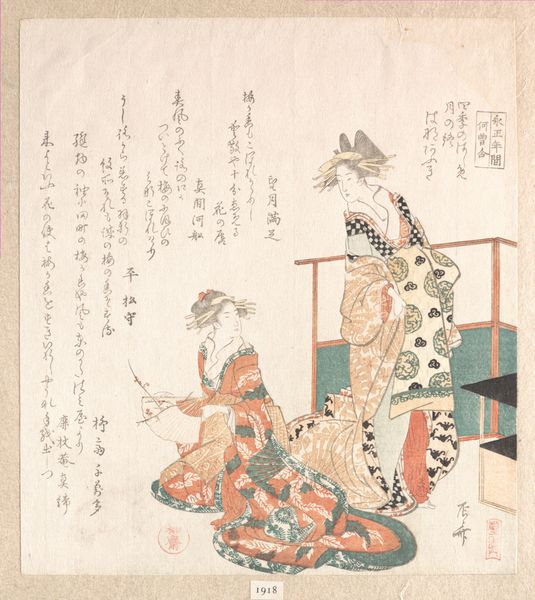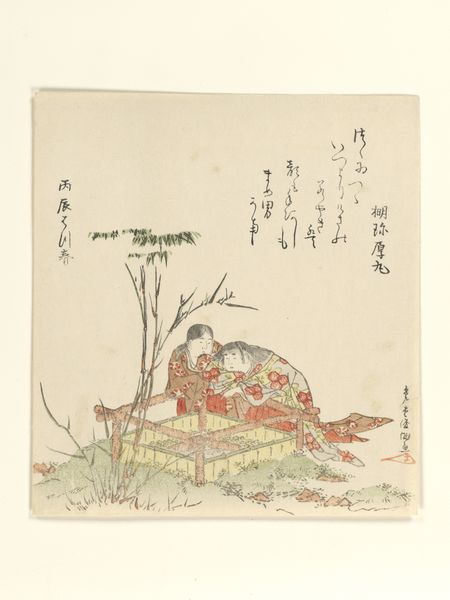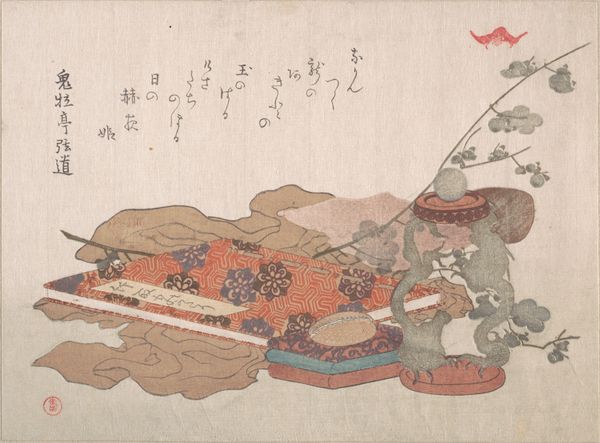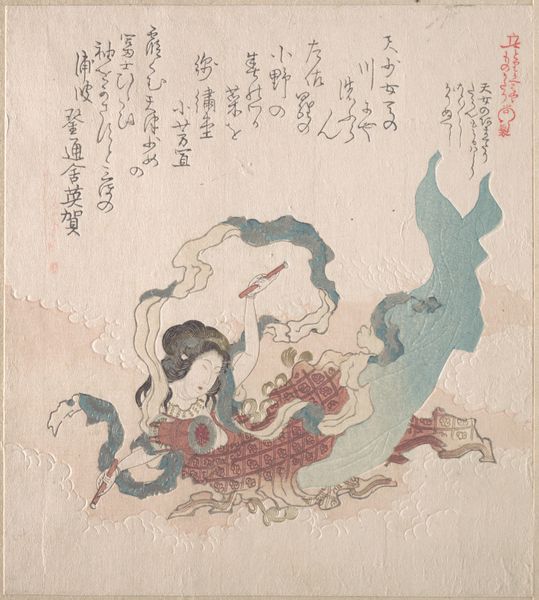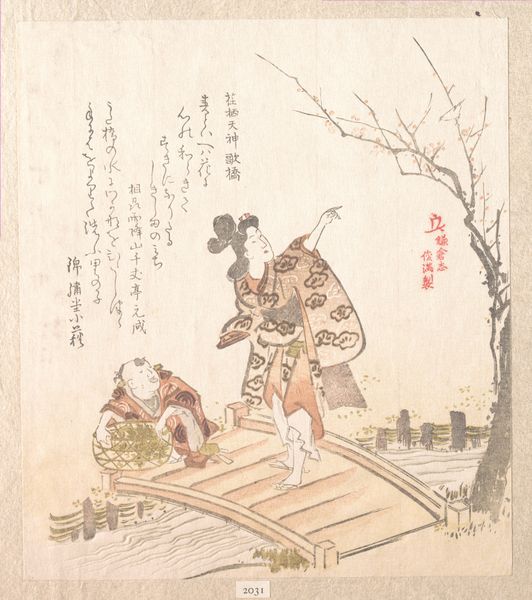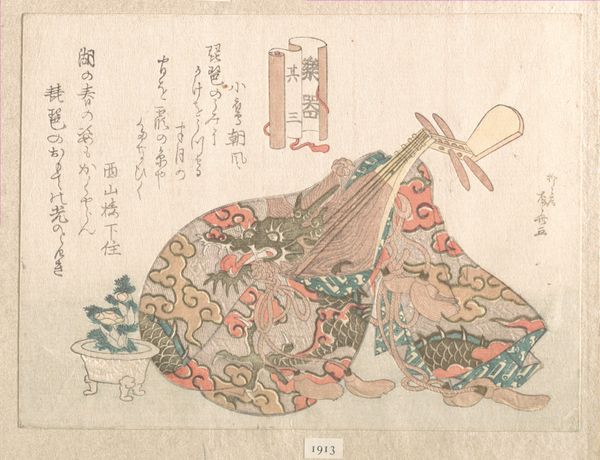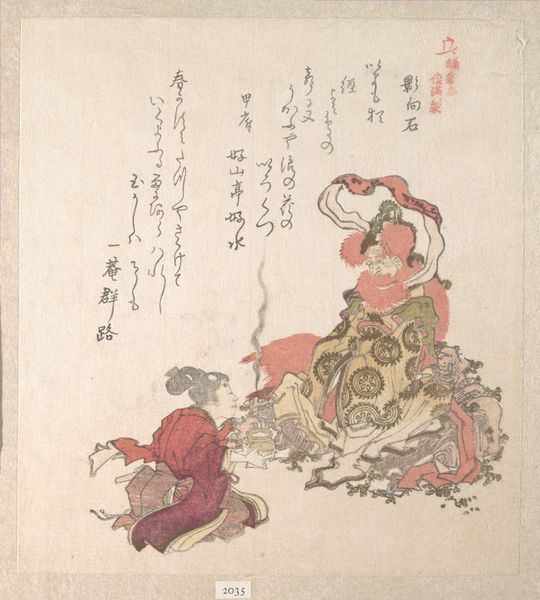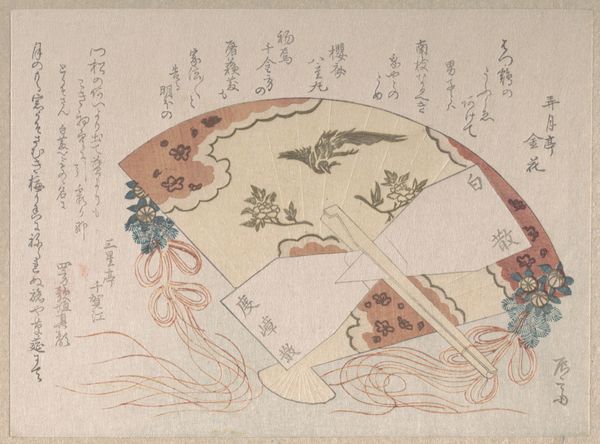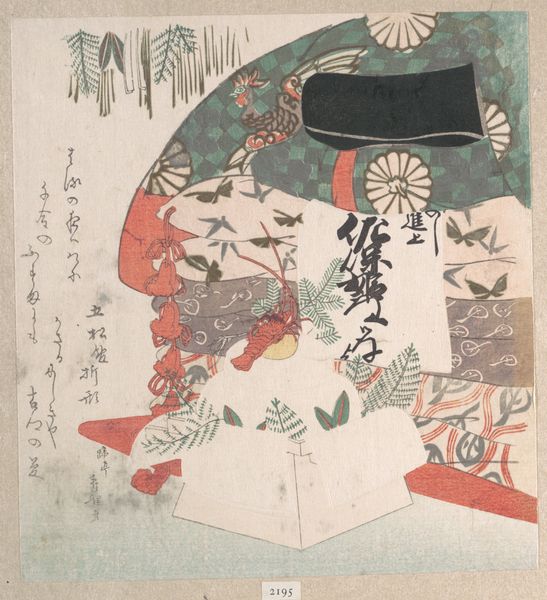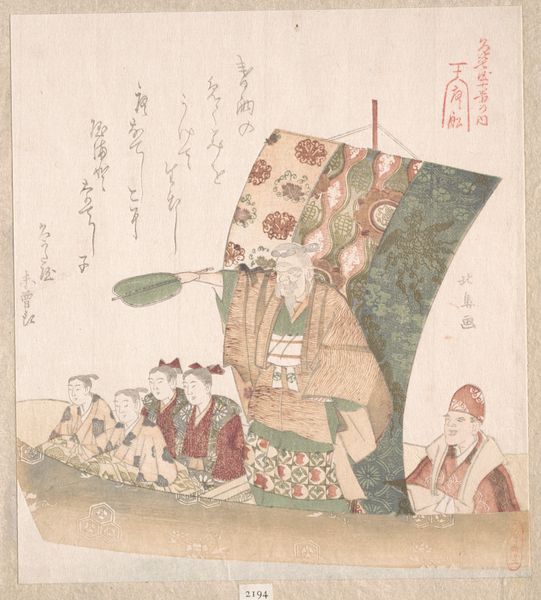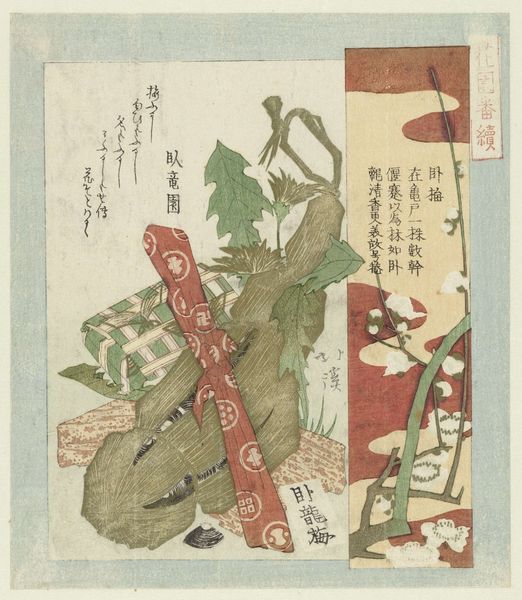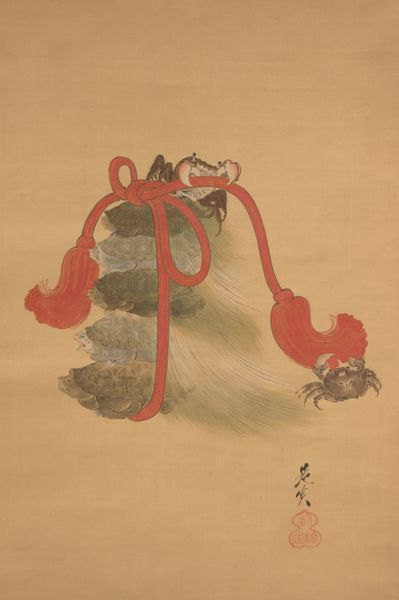
# print
#
asian-art
#
landscape
#
ukiyo-e
#
figuration
Dimensions: 8 1/4 x 7 1/4 in. (21 x 18.4 cm)
Copyright: Public Domain
Editor: Here we have Kubo Shunman’s 19th-century print, "History of Kamakura," currently residing at the Met. It's a Ukiyo-e style landscape piece with a beautiful female figure in the foreground, seeming to emerge from swirling waters next to an imposing rock formation with inscriptions. The overall mood seems ethereal and slightly melancholic. What do you see in this piece, particularly regarding its social commentary, if any? Curator: What immediately strikes me is the complex interplay of power dynamics at play. Consider the figure – presumably a celestial being or goddess – situated within a landscape marked by specific geographic and historical significance. The inscriptions suggest layers of meaning accessible primarily to a learned, likely male, audience of that time. How does the artist position the feminine within the historical narrative? Is it an empowered representation, or is she merely an aesthetic object within a male-dominated discourse? Editor: I hadn't considered the intended audience so specifically. I was initially focused on the aesthetic qualities – the swirling lines and the serene expression. Are you suggesting there might be a tension between the visual pleasure the print offers and its deeper, perhaps more restrictive, social implications? Curator: Precisely. Ukiyo-e prints, while often celebrated for their beauty, participated in complex systems of representation. Who was able to access and interpret these images, and whose stories were being prioritized? Exploring the visual vocabulary and the historical context surrounding this work allows us to unearth potential critiques of gender, class, and knowledge itself. The serpentine form, the poems, the stylized water – it all coalesces into something richer than initially meets the eye. What narratives about power and place might we uncover when analyzing visual representation in history? Editor: It sounds like there's so much more to unpack here, especially by questioning those assumed gazes and perspectives of that period! Curator: Absolutely. And thinking about these pieces in conversation with today helps us connect that art and activism through different centuries and locations.
Comments
No comments
Be the first to comment and join the conversation on the ultimate creative platform.
